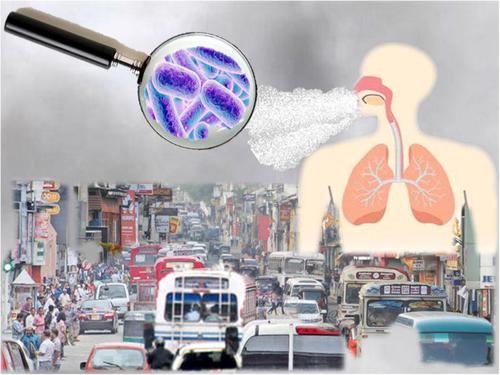Air Quality, Atmosphere & Health ( IF 2.9 ) Pub Date : 2021-04-07 , DOI: 10.1007/s11869-021-01001-1 Ruvini Wathsala Kumari Amarasekara , Meththika Vithanage , Preminda Samaraweera , Ashantha Goonetilleke , Dhammika Nayoma Magana-Arachchi

|
The study was designed to determine the variations in the diversity and the total abundance of airborne bacteria in the atmosphere of nine locations in Kandy City, the cultural capital of Sri Lanka. Culturable microorganisms were identified using 16S rDNA sequencing. Quantification of total bacterial abundance was calculated using real-time PCR. Twenty-eight bacterial species were identified by 16S rDNA sequencing. Bacillus cereus, Bacillus pumilus, Pseudomonas aeruginosa, Pseudomonas stutzeri, and Brevundimonas vesicularis were present in all the sampling sites. Most of the recorded species were opportunistic human pathogens of the respiratory tract (Pseudomonas spp., B. cereus, B. vesicularis, Klebsiella pneumoniae), gastro intestine (B. cereus, K. pneumoniae), and skin (B. cereus). The highest total bacterial load (1.42×1010 cells/m2) was at the railway station where traffic congestion was the highest while significantly high mean culturable bacterial concentration (5.35×106 CFU/m2) (p < 0.05) was recorded from the site close to a tea plantation with heavy vegetation cover. This study shows the impact of vegetation and traffic congestion on airborne microorganisms. The presence of opportunistic pathogens highlights the need for risk assessment and management of air quality in congested urban areas.











































 京公网安备 11010802027423号
京公网安备 11010802027423号